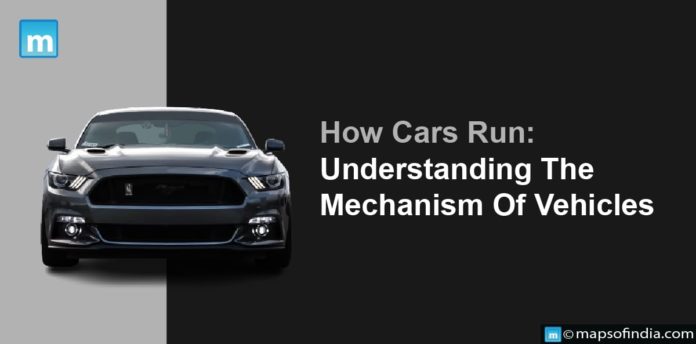Automobiles have become an essential aspect of modern life, serving as a convenient and efficient form of transportation. But have you ever pondered how automobiles work? A complicated system of components transforms energy into motion beneath the elegant façade and comfy interior. In this post, we’ll look at how cars work, focusing on the two central propulsion systems: gasoline and electric.
Fuel-Powered Vehicles
The internal combustion engine (ICE) is the core of a gasoline-powered vehicle, a marvel of engineering that turns chemical energy contained in the fuel into mechanical energy. The operation of the ICE revolves around a succession of precisely scheduled events:
-
Intake
As the piston goes downward, it creates a vacuum that sucks air and fuel into the combustion chamber.
-
Compression
As the piston rises, the air-fuel mixture is compressed, raising the temperature and pressure.
-
Combustion
The compressed air-fuel mixture is ignited by a spark plug, resulting in a controlled explosion that drives the piston downward.
-
Exhaust
As the piston goes upward, the combustion byproducts are forced out through the exhaust valve. This cycle is repeated indefinitely, producing the power that pushes the vehicle ahead. The transmission transfers the rotating motion of the ICE to the wheels by adjusting the gear ratio to optimum power and speed.
Electric Vehicles
Electric vehicles (EVs) represent a fundamental leap in automobile technology, with an electric motor driven by batteries replacing the ICE. EVs have advantages over gasoline vehicles, including zero tailpipe emissions, quieter operation, and rapid torque delivery.
Following are the essential components of an EV powertrain:
-
Traction Battery Pack
The battery pack that powers the electric motor is known as the traction battery pack.
-
Electric Motor
The electric motor turns electrical energy into mechanical energy, which propels the vehicle by rotating the wheels.
-
Power Electronics Controller
The Power Electronics Controller controls the flow of electricity between the battery pack, motor, and other electrical components.
-
Regenerative Braking System
This technology gathers braking energy and converts it to power to recharge the battery pack. An electric motor’s operation is based on the interaction of magnetic fields. When an electric current travels through a wire coil placed within a magnetic field, it produces a force that causes the coil to rotate. This rotating force is transferred to the wheels, causing the vehicle to move ahead.
Comparing Fuel and Electric Vehicles
Both gasoline-powered vehicles and electric vehicles have distinct advantages and disadvantages. Unlike EVs, gasoline-powered vehicles have a more extensive range and require less time to refuel. They do, however, pollute the atmosphere and contribute to climate change. On the other hand, electric vehicles emit no exhaust emissions, making them a more environmentally responsible option. Their range, however, is restricted, and charging durations can be lengthy.
The automobile industry is changing dramatically, with a rising emphasis on electric vehicles and sustainable mobility options. While traditional internal combustion engines have dominated the automobile market for decades, advances in battery technology and growing worries about climate change have accelerated EV adoption. Understanding the processes of gasoline and electric vehicles provides vital insights into the technological breakthroughs influencing transportation’s future.





